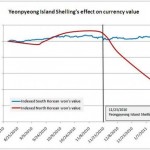Andrei Lankov writes in the East Asia Forum:
Until some 10 years ago, defection from North Korea implied that the person’s connections with his or her homeland would be broken for a long time, or perhaps even forever. North Korea was a huge black hole from where almost nothing could get out. But this is not the case anymore.
The number of North Korean defectors in South Korea has increased tremendously. In 2000, there were merely 1,400 North Koreans residing in the ROK. Now, a decade later, their numbers exceed 21,000.
These people are usually described as ‘defectors,’ but this name is misleading since almost none of them were driven by purely political considerations when they decided to leave North Korea. In most cases, they initially move to China, looking for food and better paying jobs. Only later do they usually find ways to move to South Korea, where, as they assume, their lives would be easier and more stable than in China.
To some extent these expectations are proven correct. By South Korean standards, North Korean refugees are not doing too well, their income being roughly half the income of the average South Korean. Nonetheless, even the 1 million won per month, plus subsidised housing and healthcare, are usually seen by refugees as affluence.
However, being Koreans they do not forget about their family members left behind in North Korea. In some cases the refugees save money to pay a professional defection specialist (simply called a broker) to relocate their family members to South Korea. A typical defection costs about 2-3 million won, but in some complex cases (for example, when the family members are old and fragile, very young or live far away from the border), it might cost considerably more.
Not everybody is willing to bring their entire family here and not every North Korean family wants to move to Seoul. Instead, defectors send money to their families back in the North. In recent years these transfers have dramatically increased in scale.
Remittances to the North are, strictly speaking, illegal according to both South and North Korean law. Nonetheless there is no way to stop this activity and, frankly, neither government is really willing to do so.
Last December the Database Centre for North Korean Human Rights conducted a survey of the economic situation of North Korean refugees in South Korea. According to the survey, 49 per cent of refugees regularly send money to their families in the North. The average amount sent by one person is estimated to be about 1 million won per year.
On balance the researchers estimated that about $10 million is sent North by defectors annually. There have been other attempts to estimate the scale of the remittances but those estimates are not much different ― most authorities agree that the annual amount is within the range of $5-$15 million. The $10 million is not a reliable amount for such a poor country as North Korea. After all, the Gaeseong Industrial Complex, often described as a major cash cow for the regime, generates some $20-$35 million a year.
Of course, one cannot make a bank transfer at a Citibank branch somewhere in the North Korean wilderness, and Western Union has yet to open its offices in the North. Remittances are made in cash and handled by the same networks of brokers who also smuggle people, letters and mobile phones to and from North Korea. Usually, money is first paid to a broker or their representative in South Korea and then moved or wired to China. Then the cash is smuggled across the border from China to the North. If the recipient lives near the border, they usually get the money straight from the smuggler. For those who live further south (in Pyongyang for example) the money might be delivered by a courier.
The complexity and risk of such an arrangement implies that service fees are expensive. The transaction fee currently fluctuates at 20-30 per cent of the total, so from the $1,000 sent by a refugee from Seoul, only $700-$800 will reach her relatives. Nonetheless, the system is quite reliable and incidents when the money does not reach its intended destination are rare.
Judging by anecdotal evidence, such money seems to be used for investments by North Korean recipients, most of whom run small businesses or workshops.
Politically, these remittances are important. North Koreans nowadays suspect that South Korea is not the destitute American colony the official propaganda used to criticize. These regular remittances make a difference; they reinforce the understanding that South Korea is a very rich place indeed. In the long run the spread of this knowledge does not bode well for the people who are now in control in Pyongyang.
Read the full story here:
Remittances from North Korean defectors
East Asia Forum
2011-4-21

